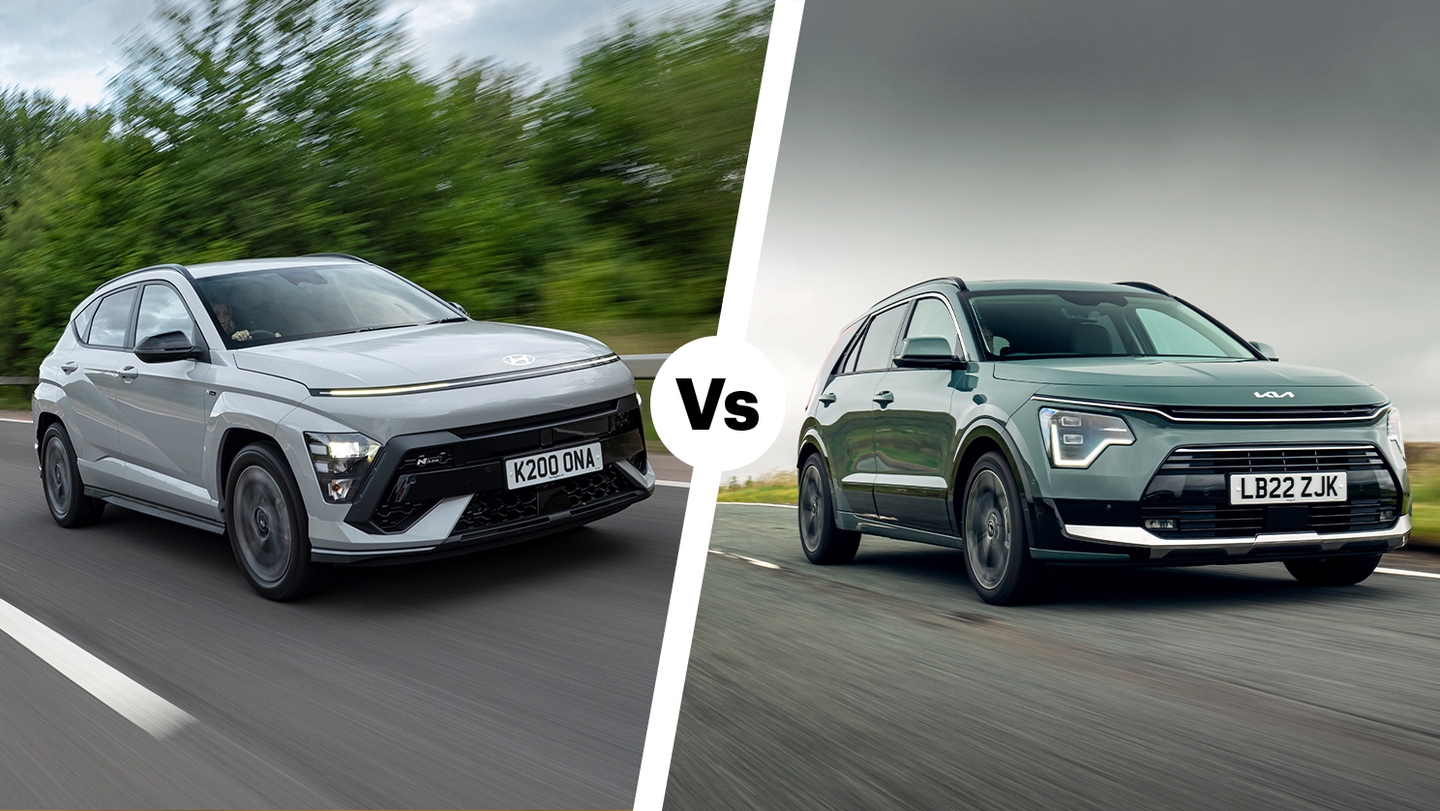Either of these cars is a smart choice.
The Hyundai Kona and Kia Niro are both stylish small SUVs with a focus on tech and efficiency. It’s not surprising that these cars are quite similar in some areas, because Hyundai and Kia are part of the same group and components are shared between brands. Luckily, we’re here to help if you’re undecided on which to pick.
Hyundai Kona vs Kia Niro compared
| Hyundai Kona | Kia Niro |
Pros:
| Pros:
|
Cons:
| Cons:
|
Styling
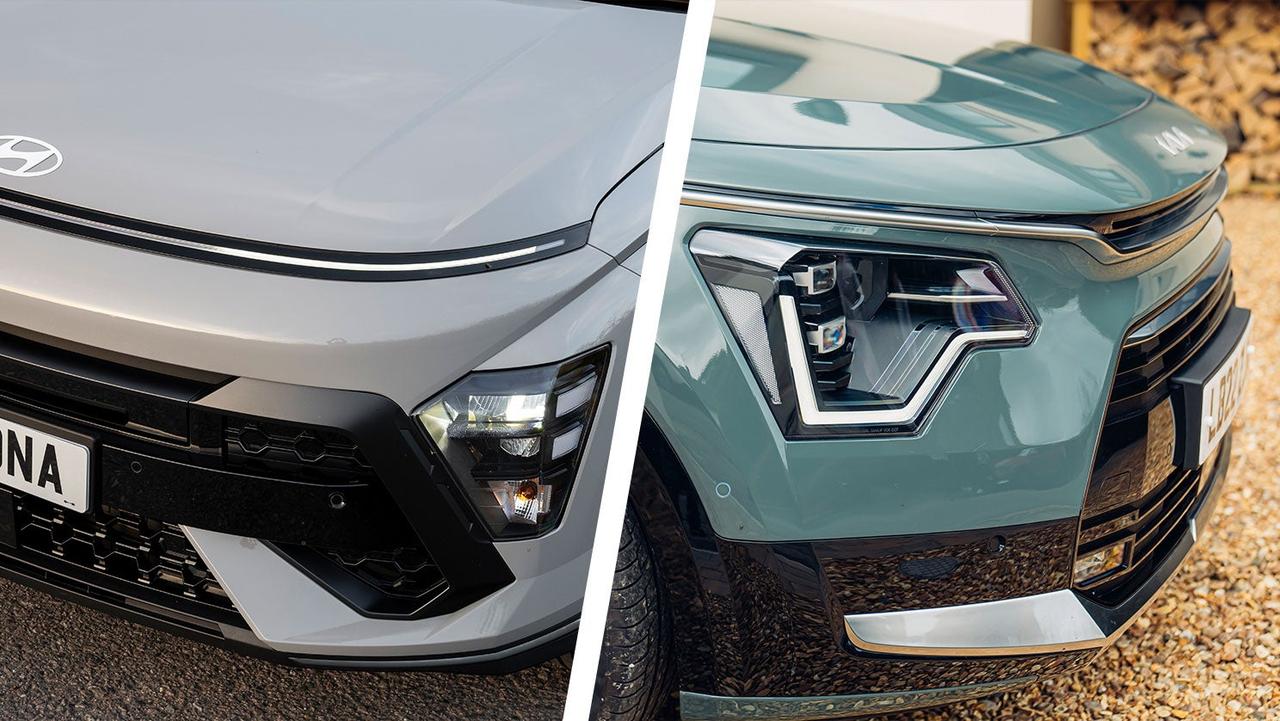
Both these cars are designed to stand out. The Kona has always been blessed with interesting styling, while the Niro has gained a sharper suit for this second generation. Clearly inspired by the larger Tucson, the Kona’s bodywork is a riot of crisp lines – like lasers at a fancy nightclub. Slim lightbars front and rear give the car a futuristic and premium look. The Niro, meanwhile, is more technical, with unique headlight clusters and smoother panels.
If you’re after sporty styling, you’ll want the Kona. There are N Line and N Line S trim levels with big wheels and racecar-inspired bumpers – including a fake diffuser element on the rear bumper, next to the twin exhausts. The N Line models also add red interior accents and metal-effect pedals.
Interior
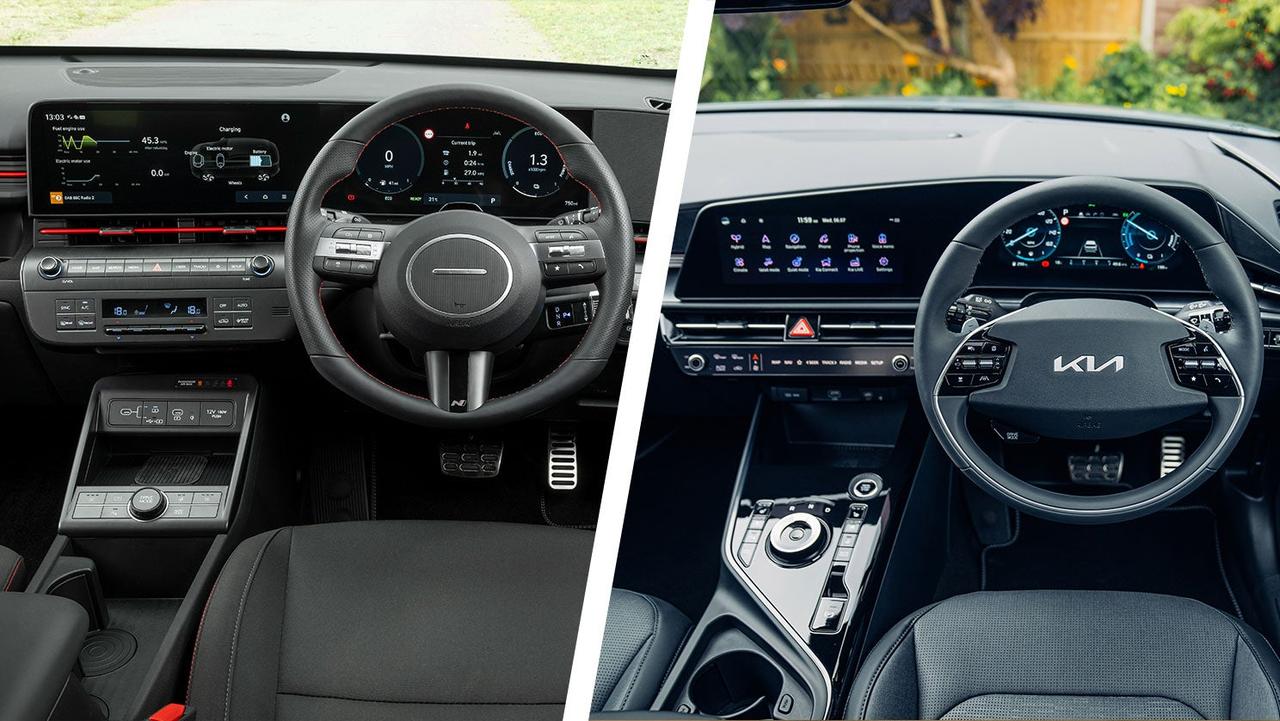
The Niro and Kona are both modern-feeling and probably more premium than you’d expect. But, besides a pair of large screens with crisp graphics, the two cars approach interior design in different ways.
The Niro has a sleek cabin that borrows the best bits from the Sportage and EV6. There’s a slim panel that swaps between climate controls and the main functions of the touchscreen, which looks fancy although it’s a little fiddly to use. Meanwhile, the Kona is surprisingly button-heavy, with proper controls for the things that are touch panels in the Niro.
Dimensions and practicality
| Hyundai Kona | Kia Niro | |
| Length | 4,350mm | 4,420mm |
| Height | 1,585mm | 1,585mm |
| Width (exc mirrors) | 1,825mm | 1,825mm |
| Boot space (seats up) | 466 litres | 348-475 litres |
Sharing the same platform, the Kona and Niro are very closely matched in terms of size. We wonder if it was deliberate to have identical height figures for both cars, though.
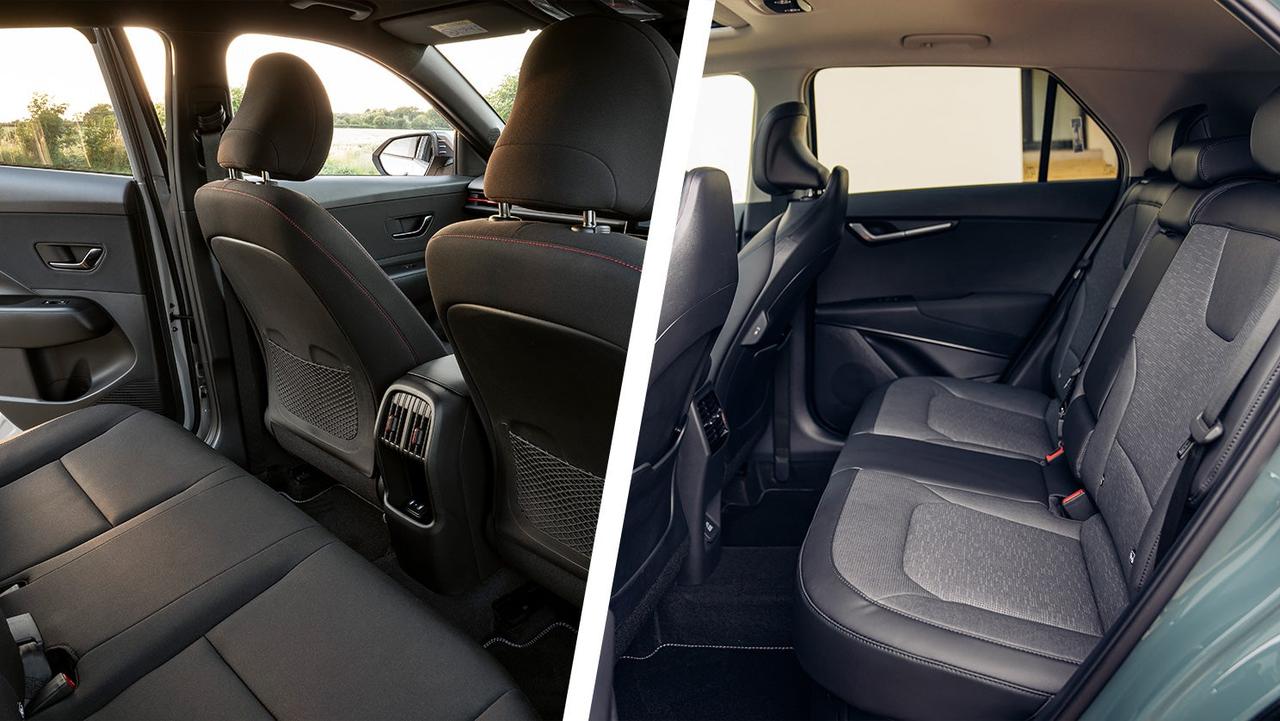
The new Kona is vastly more spacious than the original model, so it’s now capable of transporting four tall-ish adults and a lot of luggage. However, the Niro is slightly more spacious still – its longer length benefitting passenger space.
Normal hybrid versions of the Niro offer a 451-litre boot, rising to 475 litres in the fully electric Niro EV. They’re very strong figures for a small family car. Because the battery pack in the plug-in hybrid is mounted under the boot floor, the Niro PHEV’s boot is shallower and isn’t so impressive at 348 litres. The Kona offers the same amount of boot space, regardless of engine type.
Engines
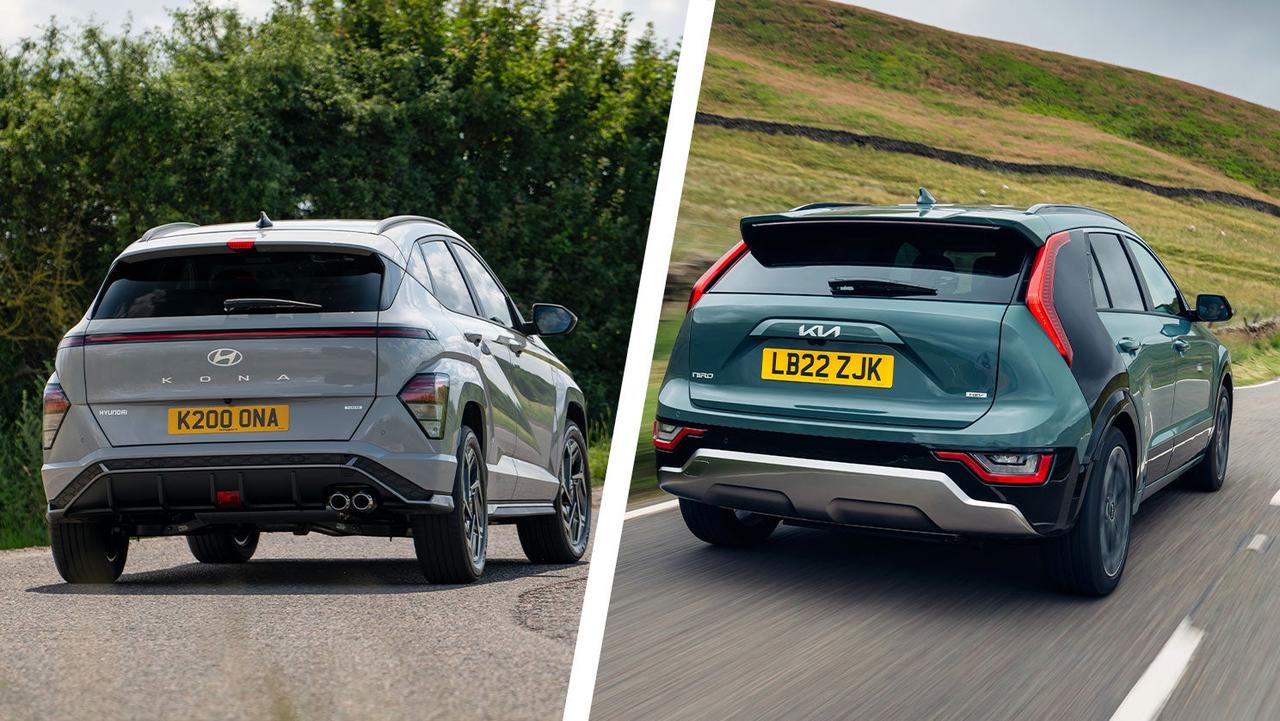
Every Niro comes with some level of electrification and an automatic gearbox. The range kicks off with a hybrid that doesn’t need to be plugged in, which promises up to 60mpg and the ease of use of a normal petrol car. Then, there’s a plug-in hybrid, with a quoted 38-mile electric range and the backup of a petrol engine for longer journeys, and the Niro EV.
The Kona doesn’t come with a plug-in-hybrid engine, but does feature petrol engines without any hybrid-ness. A 1.0-litre engine kicks off proceedings and offers cheap insurance costs and 57mpg, but it’s slow. Then there’s a 1.6-litre engine with 138hp and the choice of manual or automatic gearboxes, although we can imagine many buyers preferring the hybrid over this engine.
Both electric versions of the Kona and Niro share a 65kWh battery pack, which is good for over 280 miles of range. This is the most refined powertrain of the lot, and its impressive range will be plenty for the vast majority of buyers. However, a top-up to 80% at a fast charger takes around 45 minutes, which falls short of the half-hour benchmark some rivals achieve – including Kia’s own EV3, which is cheaper than the Niro!.
Value
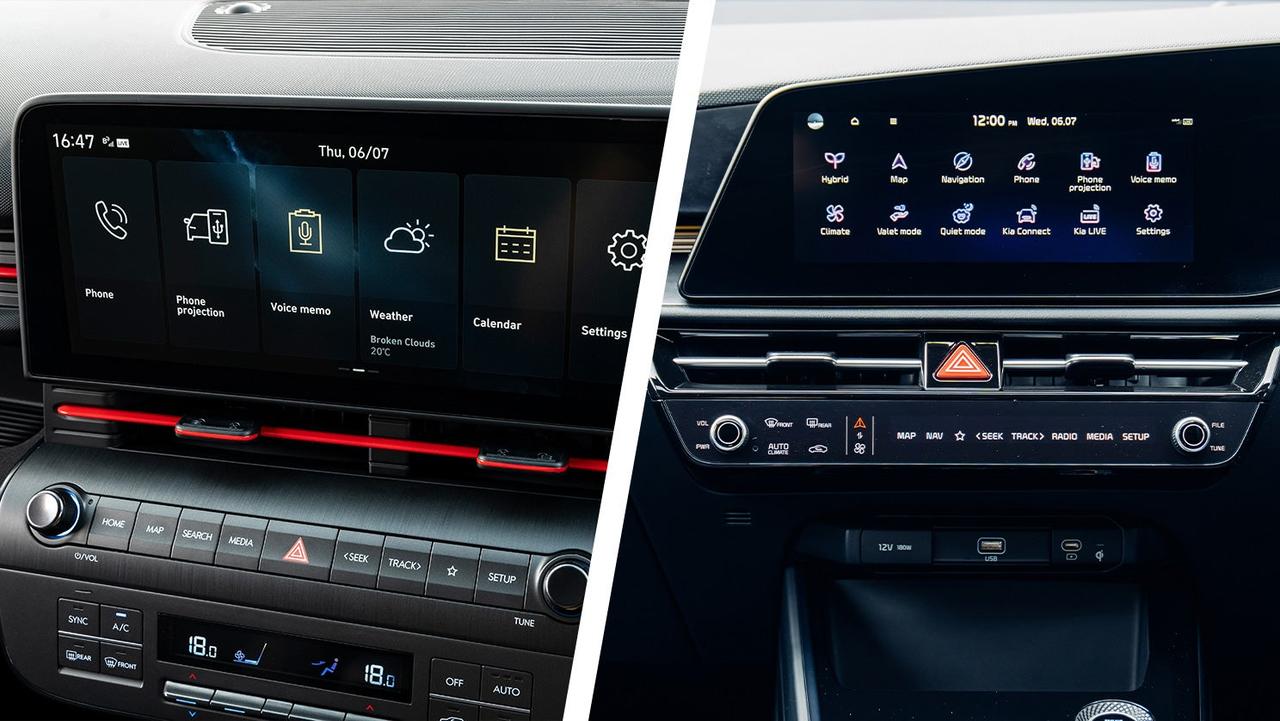
The Kona is the cheaper of the two as a new car, but only because it offers a normal petrol engine. Hybrid and electric versions are almost identically priced. Both top out at over £40,000 – at which point the luxury car tax comes into play. And there are better cars for £40k. In fact, if you’re looking at the electric versions of these as a new-car buyer, we’d advise going for the newer Kia EV3 instead.
Both of these cars have longer-than-average warranties. Hyundai’s warranty is for five years and doesn’t impose a mileage restriction, while Kia’s is for seven years but capped to 100,000 miles.
On the used market, prices are in the same ballpark for both the Kona and Niro. The difference on a PCP finance deal between two cars with a similar age and mileage is likely to be around £20 a month or so.
Which is best?
With these cars so closely matched, your choice could come down to which car’s styling or interior you prefer. The Kona is a little easier to use, comes with a wider choice of engines and features sportier styling, while the Niro is a bit more spacious and has a longer warranty. We’d probably edge towards the Niro, but the Kona is a great choice as well.
Read our Kia Niro review and Hyundai Kona review for more information on these cars, or shop used Kia Niro cars and used Hyundai Kona cars for sale if you’ve made up your mind.































